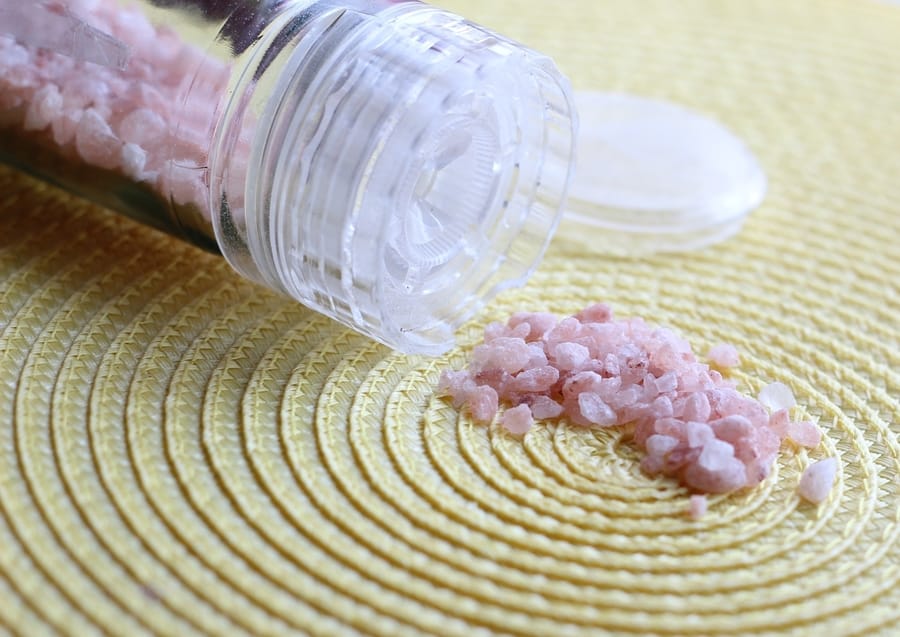I’ve used Himalayan salt for curing a range of meats, including pork, duck, venison, and fish, over the years.
It’s pink and it’s salt — but it’s not the same pink salt used for preserving meat. This causes considerable confusion, especially for beginners attempting to follow traditional meat curing methods.
This article explains how Himalayan salt is used in meat curing, when it’s suitable, and why it’s often confused with pink curing salt. I’ll also share some firsthand observations from projects I’ve worked on using both types of salt.
So, let’s get into what makes Himalayan salt unique — and when you should (or shouldn’t) use it for curing meat.
Can You Use Himalayan Salt for Curing Meat?
Yes, you can use Himalayan salt to cure meat — I have with no issues.
It’s a type of natural rock salt composed of approximately 98% sodium chloride, with the remaining 2% comprising trace minerals such as iron, magnesium, potassium, and calcium. These minerals are what give it its distinctive pink color.
Because it’s unrefined and mineral-rich, it’s often considered a “healthier” or more natural option than regular table salt.
Why It’s Confused With Pink Curing Salt
Himalayan salt and pink curing salt are both… pink. That’s about where the similarity ends. The confusion likely comes from their appearance, and the fact that both are used with meat.
But only pink curing salt (like Prague Powder #1 or #2) contains sodium nitrite or sodium nitrate. These are used for food safety, mainly to lower risks of botulism, speed up curing time, and give the meat a pink hue (for pork that is).
Himalayan salt does not contain nitrites or nitrates, and shouldn’t be used as a substitute in recipes that call for curing salt.
I’ve seen people online using Himalayan salt in recipes that call for pink curing salt. That’s a considerable risk if you’re doing anything like dry-cured salami or smoked meats that require pathogen protection. The salt won’t do the same job, and the results can be unsafe.
How I’ve Used Himalayan Salt Successfully
I’ve had good results using Himalayan salt,
- dry-cured bacon
- Lightly seasoned duck breasts for smoking
- dry cured whole muscle meats
In these cases, the Himalayan salt gave a mild, rounded flavor. I didn’t notice any huge difference from sea salt, and the meat cured evenly.

But again, I wasn’t relying on it to preserve the meat or keep it shelf-stable. That’s a critical distinction.
What’s Actually in Himalayan Salt?
There’s a common belief that Himalayan salt is somehow richer, purer, or more natural than other salts. In some ways, it is — but from a meat-curing perspective, the difference is primarily cosmetic and minimal.
Roughly 98% of Himalayan salt is standard sodium chloride, just like table salt. The remaining 2% is composed of trace minerals, including potassium, calcium, magnesium, and iron. These minerals give it the signature pink or reddish color.
One thing I’ve found interesting is how similar these trace minerals are to what’s found in unrefined sea salt used in meat curing. But the actual quantities of these minerals are tiny, measured in parts per million.
I’ve found that Himalayan salt hasn’t altered the outcomes. Table salt often has additives and isn’t a good option for meat curing.
For those interested in the full mineral breakdown, here’s a resource worth bookmarking: Spectral analysis of Himalayan salt composition.
What Does Pink Curing Salt Do?
This is where the confusion really matters. Pink curing salt — also known as Prague Powder #1 or #2 — is a curing agent (mainly salt still though). It contains sodium nitrite or nitrate and is designed to prevent the low risk of botulism.
Here’s a simplified breakdown of what these salts are made of:
- Pink Curing Salt #1: 93.75% table salt, 6.25% sodium nitrite – used for cures under 30 days (like bacon, pastrami)
- Pink Curing Salt #2: 89.75% table salt, 6.25% nitrite, 4% nitrate – used for dry-cured meats aged longer than 30 days
It’s bright pink only so that it’s not confused with regular salt during cooking. This salt will help develop that deep pink interior color (think cured ham), but more importantly, it protects against microbial risks.
For a more in-depth look, I’ve written a comprehensive guide on what pink curing salt is and how to use it.
In my curing process, I use pink salt #2 for any meat drying project lasting 30+ days (such as dry-cured salami), and #1 only for shorter projects where I’m not cooking the meat at high temperatures, like pastrami. I avoid pink #1 for bacon since I usually crisp it at over 350°F, which increases the risk of nitrosamines.
Curing for Preservation vs. Curing for Flavor
This is another distinction worth making. Not all “curing” is about food safety. Some people use salt to “cure” steaks before cooking — this is closer to seasoning. Others dry-cure meats to keep them shelf-stable for months — a process that requires precision and protection.
If you’re unsure of the terminology or application, here’s a helpful breakdown comparing dry curing versus brining. The key difference is time, technique, and whether nitrites are involved.
When curing for preservation — such as in classic Italian salumi or cold-smoked meats — safety depends on getting everything right, from salt ratios to pH levels and airflow. Himalayan salt isn’t designed for this.
Expert Tip
Always verify the type and dosage of salt and curing agent salt for each project. Safety comes first, and guessing is not an option when you’re curing meat for months.
Comparing Himalayan, Sea, and Table Salt
Over the years, I’ve experimented with different salts and their effects on cured meat. Here’s a quick comparison based on my personal experience and the mineral profiles of each:
- Himalayan Salt: Rock salt mined in Pakistan, contains trace minerals. Works for short-term curing but not for preservation. Mildly earthy flavor.
- Sea Salt: Harvested from evaporated seawater. Also contains trace minerals. I prefer this for most of my dry-cured meat projects.
- Table Salt: Highly refined sodium chloride, often iodized and includes anti-caking agents. I avoid it due to potential off-flavors in cured meat.

Frequently Asked Questions
Is Himalayan Salt the Same as Pink Curing Salt?
No. Himalayan salt is natural rock salt with trace minerals and contains no nitrates or nitrites. Pink curing salt (also pink in color) contains sodium nitrite/nitrate and is used to add to the total salt as a curing salt agent.
Can I Use Himalayan Salt Instead of Curing Salt?
No, do not substitute it with Prague Powder Pink Curing Salt No. 1 or 2.
What’s the Best Salt for Meat Curing?
For preservation and dry curing, use sea salt.
Have you used Himalayan salt in a curing project? Let me know your thoughts or questions in the comments below!

Tom Mueller
For decades, immersed in studying, working, learning, and teaching the craft of meat curing, sharing the passion and showcasing the world of charcuterie and smoked meat. Read More

